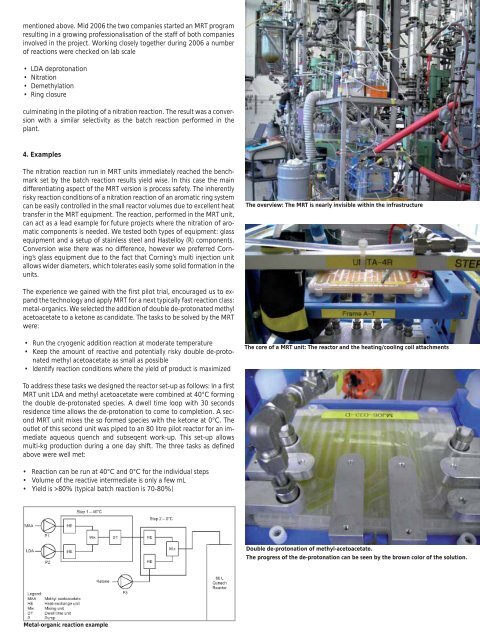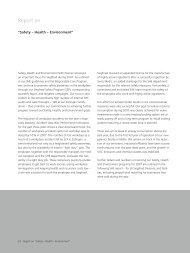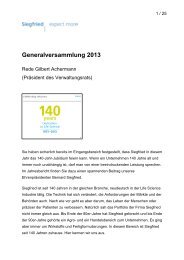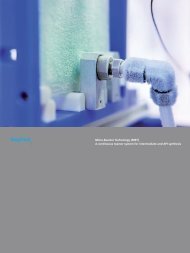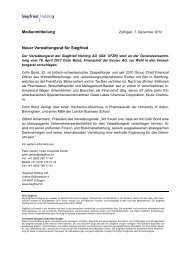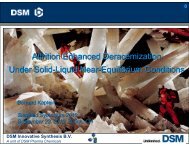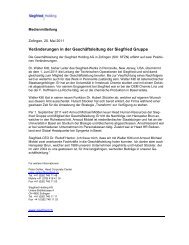You also want an ePaper? Increase the reach of your titles
YUMPU automatically turns print PDFs into web optimized ePapers that Google loves.
mentioned above. Mid 2006 the two companies started an MRT program<br />
resulting in a growing professionalisation of the staff of both companies<br />
involved in the project. Working closely together during 2006 a number<br />
of reactions were checked on lab scale<br />
• LDA deprotonation<br />
• Nitration<br />
• Demethylation<br />
• Ring closure<br />
culminating in the piloting of a nitration reaction. The result was a conversion<br />
with a similar selectivity as the batch reaction performed in the<br />
plant.<br />
4. Examples<br />
The nitration reaction run in MRT units immediately reached the benchmark<br />
set by the batch reaction results yield wise. In this case the main<br />
differentiating aspect of the MRT version is process safety. The inherently<br />
risky reaction conditions of a nitration reaction of an aromatic ring system<br />
can be easily controlled in the small reactor volumes due to excellent heat<br />
transfer in the MRT equipment. The reaction, performed in the MRT unit,<br />
can act as a lead example for future projects where the nitration of aromatic<br />
components is needed. We tested both types of equipment: glass<br />
equipment and a setup of stainless steel and Hastelloy (R) components.<br />
Conversion wise there was no difference, however we preferred Corning’s<br />
glass equipment due to the fact that Corning’s multi injection unit<br />
allows wider diameters, which tolerates easily some solid formation in the<br />
units.<br />
The overview: The MRT is nearly invisible within the infrastructure<br />
The experience we gained with the first pilot trial, encouraged us to expand<br />
the technology and apply MRT for a next typically fast reaction class:<br />
metal-organics. We selected the addition of double de-protonated methyl<br />
acetoacetate to a ketone as candidate. The tasks to be solved by the MRT<br />
were:<br />
• Run the cryogenic addition reaction at moderate temperature<br />
• Keep the amount of reactive and potentially risky double de-protonated<br />
methyl acetoacetate as small as possible<br />
• Identify reaction conditions where the yield of product is maximized<br />
The core of a MRT unit: The reactor and the heating/cooling coil attachments<br />
To address these tasks we designed the reactor set-up as follows: In a first<br />
MRT unit LDA and methyl acetoacetate were combined at 40°C forming<br />
the double de-protonated species. A dwell time loop with 30 seconds<br />
residence time allows the de-protonation to come to completion. A second<br />
MRT unit mixes the so formed species with the ketone at 0°C. The<br />
outlet of this second unit was piped to an 80 litre pilot reactor for an immediate<br />
aqueous quench and subseqent work-up. This set-up allows<br />
multi-kg production during a one day shift. The three tasks as defined<br />
above were well met:<br />
• <strong>Reaction</strong> can be run at 40°C and 0°C for the individual steps<br />
• Volume of the reactive intermediate is only a few mL<br />
• Yield is >80% (typical batch reaction is 70-80%)<br />
Double de-protonation of methyl-acetoacetate.<br />
The progress of the de-protonation can be seen by the brown color of the solution.<br />
Metal-organic reaction example


